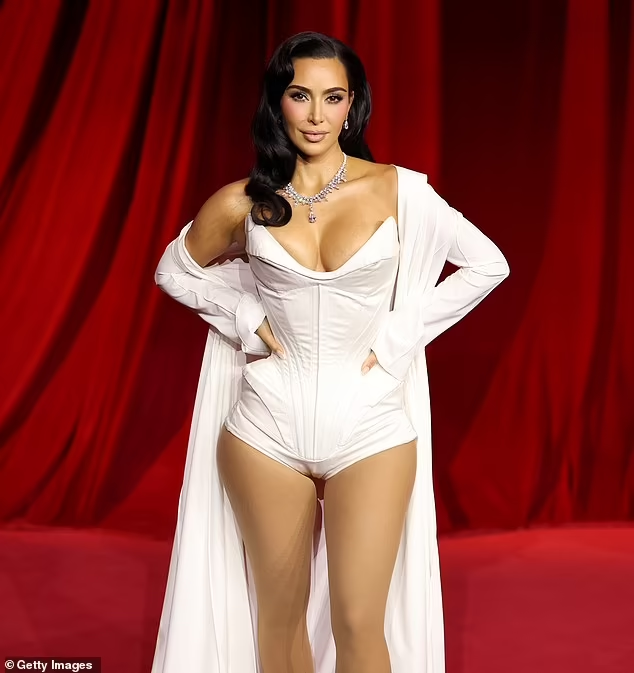Some believe beauty is subjective, but recent research suggests otherwise.
A new study claims to have uncovered the secret to the perfect female body—and it doesn’t revolve around the widely believed waist-to-hip ratio.
Scientists from the University of Konstanz found that the most attractive women feature a distinct ‘S’ shaped curve from the chest to the thighs.
This could explain why curvier icons like Marilyn Monroe and Kim Kardashian are often deemed more attractive than their slimmer counterparts.
According to the researchers, it’s not just having a slim waist, but a woman’s overall ‘curviness’ that enhances her attractiveness.
Their findings challenge previous studies that suggested a waist-to-hip ratio of 0.7 as the ideal shape for women.
Instead, the study reveals that a lower waist-to-hip ratio is only deemed attractive for women with lower body weight. For those with larger body types, it’s the overall curviness, not just waist size, that plays a pivotal role in perceived attractiveness.

Researchers say that the ideal woman’s body has a strong ‘S’ shaped curve from the chest to the thigh, just like Kim Kardashian (pictured)

The waist-to-hip ratio is calculated by dividing the circumference of your waist by that of your hips. Previous research has suggested that the ideal ratio for attractiveness was 0.7 for women, meaning the waist is 30 per cent smaller than the hips
Historically, researchers believed that the ratio between a woman’s waist and hips was a key determinant of her attractiveness.
This idea, which dates back centuries, suggested that this mathematical ratio represented something inherently pleasing to the eye.
More recent studies proposed that this ratio could signal underlying reproductive health.
As wider hips and increased fat distribution in the lower body have been associated with positive pregnancy outcomes, evolutionary psychologists theorized that our brains may have developed to find this ratio attractive as a sign of reproductive fitness.
Traditionally, a waist-to-hip ratio of 0.7, where the waist is 30 percent smaller than the hips, has been considered the “ideal” for attractiveness.
However, lead author Professor Ronald Hübner argues that the waist-to-hip ratio is an inadequate measure compared to the far more significant factor of overall curviness.
To test this theory, Professor Hübner presented 80 male and female participants with simple line drawings of women.
These drawings were designed so that the waist-to-hip ratio and curviness were perfectly aligned, making it impossible to assess one without the other.

The researchers showed that when curviness isn’t a factor, a waist-to-hip ratio of 0.7 is rated the most attractive when participants are shown illustrations of female figures. This diagram shows the attractiveness ratings of the various figures with those in red and yellow rated the highest
This approach allowed the researchers to verify the results of previous studies that suggested the waist-to-hip ratio played a significant role in predicting attractiveness.
Participants were asked to rate each drawing on a scale from one to 100, where one represented “not attractive at all” and 100 represented “the most attractive possible.”
As expected, the drawings with a waist-to-hip ratio closest to 0.7 were rated as more attractive.
On average, a “normal weight” drawing with this ideal ratio scored 74 for attractiveness, while a body of the same weight but with a 1:1 ratio was rated only 54.
In a second experiment, the researchers created a new set of drawings where curviness and waist-to-hip ratio were not perfectly aligned.
This setup allowed them to determine which of the two factors—curviness or waist-to-hip ratio—more strongly influenced how attractive the drawings would be rated.
The drawings of torsos were based on the curves found in images of real women wearing extremely tight corsets, showcasing the most exaggerated and severe curves.

In a second experiment, participants were asked to rate the attractiveness of torsos where curviness and waist-to-hip ratio varied. The boxes surrounded by dashed lines are those with a ratio of 0.7. However, the researchers found that having a curviness level of three was a better predictor of which bodies would be rated as most attractive for their size

Experts say that it’s women’s curviness rather than having a slim waist which is the best explanation for why they are considered attractive. Pictured: singer Raye
A group of 98 male and female participants were then shown the set of pictures and asked to rate them once more on a scale from one to 100.
As in the previous experiment, a waist-to-hip ratio of 0.7 was rated as the most attractive for smaller body types.
However, for larger body types, a smaller waist-to-hip ratio no longer served as a good predictor of attractiveness.
In fact, the largest body width with a ratio of 0.7 was rated the least attractive, with a score of just 17.
Overall, the torsos with a curviness level of three were rated as the most attractive for their body width, regardless of their waist-to-hip ratio.
In their paper, published in Scientific Reports, Professor Hübner and his colleagues write: “Theoretical considerations suggest that the waist-to-hip ratio (WHR) cannot serve as a valid indicator of curviness, contrary to what is frequently assumed, either implicitly or explicitly.”
They go on to conclude, “Consequently, one of these two attributes must be a more effective predictor of a woman’s body attractiveness. The results of this study clearly show that curviness is far superior to the WHR in this respect.”
As for why this might be, the researchers suggest that curviness could be an outward sign of evolutionarily desirable traits.

The researchers argue that simply having a low waist-to-hip ratio, like that of Sabrina Carpenter (pictured), is not sufficient to be attractive

This graph shows attractiveness as compared to the waist-to-hip ratio. The bodies with a curviness level of three (upside-down triangles) were consistently rated as the most attractive
Previous studies have suggested that various attributes may have conferred advantages in early human societies.
For example, scientists have noted that large breasts might have been considered attractive due to the benefits they offered during the extended weaning periods of hunter-gatherer children.
Some researchers have also proposed that a strongly curved spine could have helped women walk long distances more efficiently in the past.
Similarly, Professor Hübner suggests that curviness could have signaled increased fertility, a trait that our ancient ancestors may have evolved to find appealing.
The authors write: “Body width not only indicates the amount of fat around the hips, but also the pelvic width, which is important for successful birthing.”
This implies that curviness may be something our brains are inherently programmed to find attractive on an evolutionary level, a factor that the waist-to-hip ratio only partially captures.


